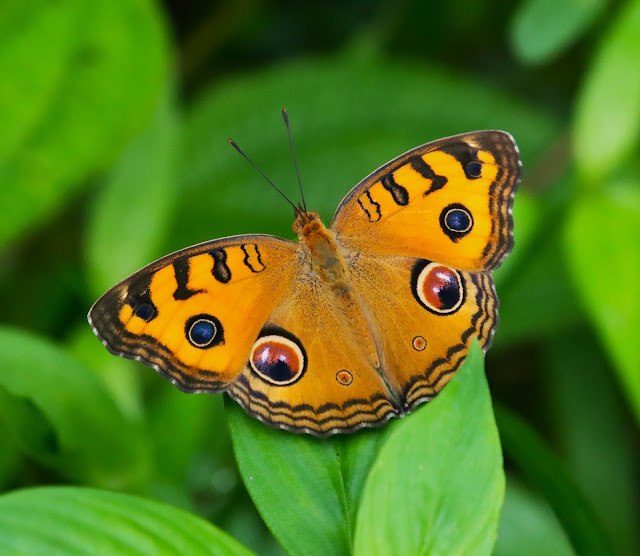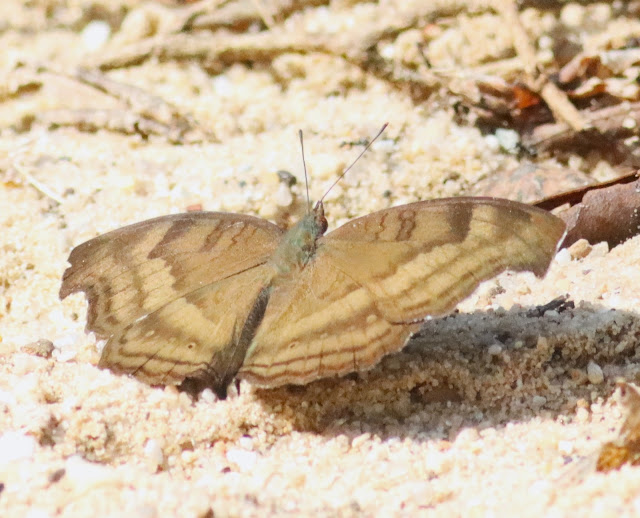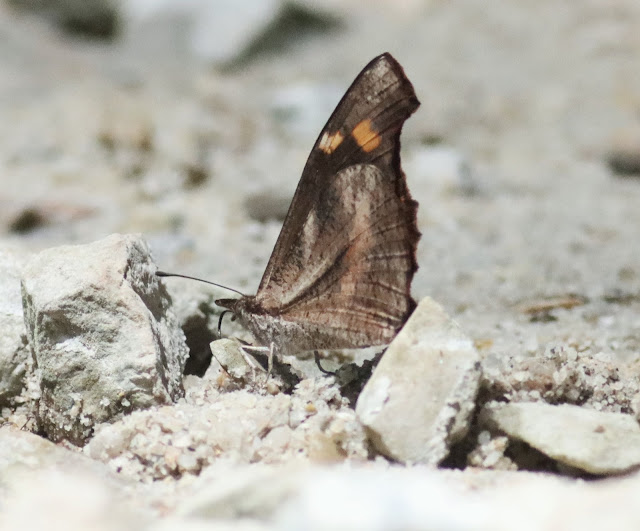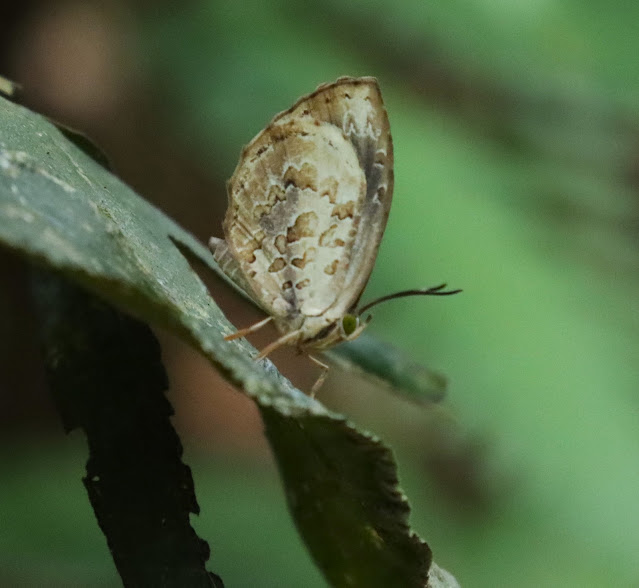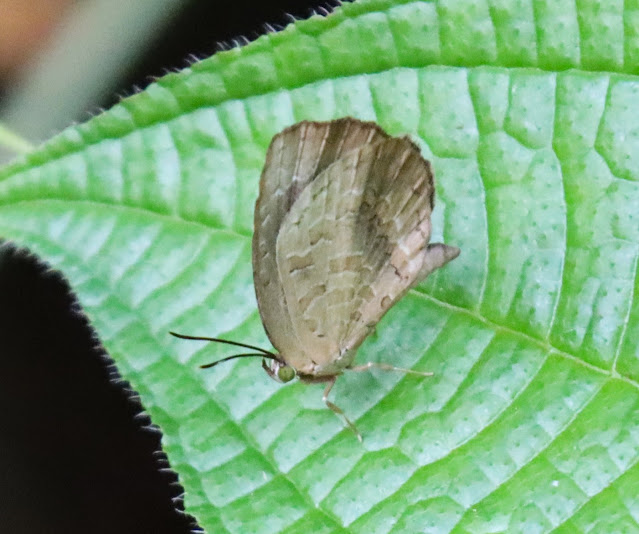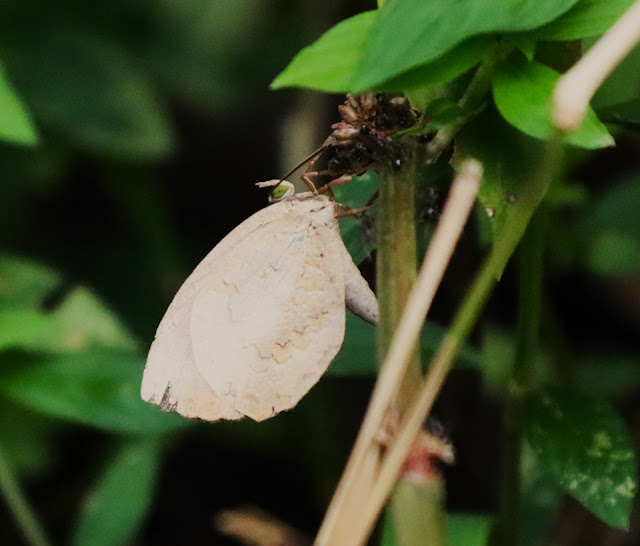After the Browings have left in March, there are still much to see in April. Maybe it could be due to the long hot weather or perhaps due to the many holidays which allowed me to explore more places. Here are a few interesting species which I have managed to find.
Here is a confrontation between a Dark Tit / Brown Tit (Hypolycaena thecloides thecloides) and a Weaver ant. Looks like the little ant has caused a lot of damage.
Dark Tit / Brown Tit (Hypolycaena thecloides thecloides)
From the above first photo, you might probably understand why scientist name it Dark / Brown Tit but I strongly urged current entomologists to try amending some of the species' common name to a more decent one.
The identification remarks: HW protrusion / ("tanduk") not obvious, FW tip not dark enough and postdiscal stripes looks quite broader than C. rahria. Other info: overall looks more orengey and smaller in person than C. rahria.
Plain Yellow Lancer (Xanthoneura corissa indrasana)
Like all skippers it is also quite territorial. Saw it chasing other skippers away.
Peablue (Lampides boeticus)
This butterfly is reported be a a migratory species.
Peablue (Lampides boeticus)
It looks like a male and it is sampling on a flower of Chinese Violet (Asystasia gangetica micrantha)
Peacock Pansy (Junonia almana)
One of the best photos I ever had with this species.
Horsfield's Baron (Tanaecia iapis puseda)
The other locations where has also been reported were in Fraser's Hill.
It seems to enjoy the Banticoot berries of Leea indica plant.
Malayan Plum Judy (Abisara saturata kausambioides)
A smart girl - laying her eggs beneath the leaf so as to avoid the preying eyes of predators as well as the sun and rain.
Malayan Plum Judy (Abisara saturata kausambioides)
Dried-leaf Palmfly (Elymnias saueri saueri)
Only once in a while you will get to see this Palmfly. So its must be quite rare or maybe moderately rare.
Eurema andersonii andersonii (One-spot Grass Yellow / Anderson's Grass Yellow)
Grass Yellows are reported to be in season around March and April where you can find them more.
Yellow Glassy Tiger (Parantica aspasia)
Although common but never as many as a Blue Glassy Tiger at any one time.
This should be a Common Four Ring (Ypthima huebneri) - one 'eye' larger than the other.
Looks like there is a walking Orchid?
Due to its small size, I had to go nearer to see what it is before I took a shot.
Had to kneel down a bit lower in order to get these shots.
Clipper (Parthenos sylvia lilacinus)
I think this is no longer a common butterfly. Last seen by me was many years ago
Jacintha Eggfly (Hypolimnas bolina jacintha)
Common Tit (Hypolycaena erylus teatus)
Male
An opened wing shot of a male Common Tit.
Here are a few tricky ones.
They are both Appias albina albina (Common Albatross) I think
It looks like a Common Sailor (Neptis hylas) but it is not.








